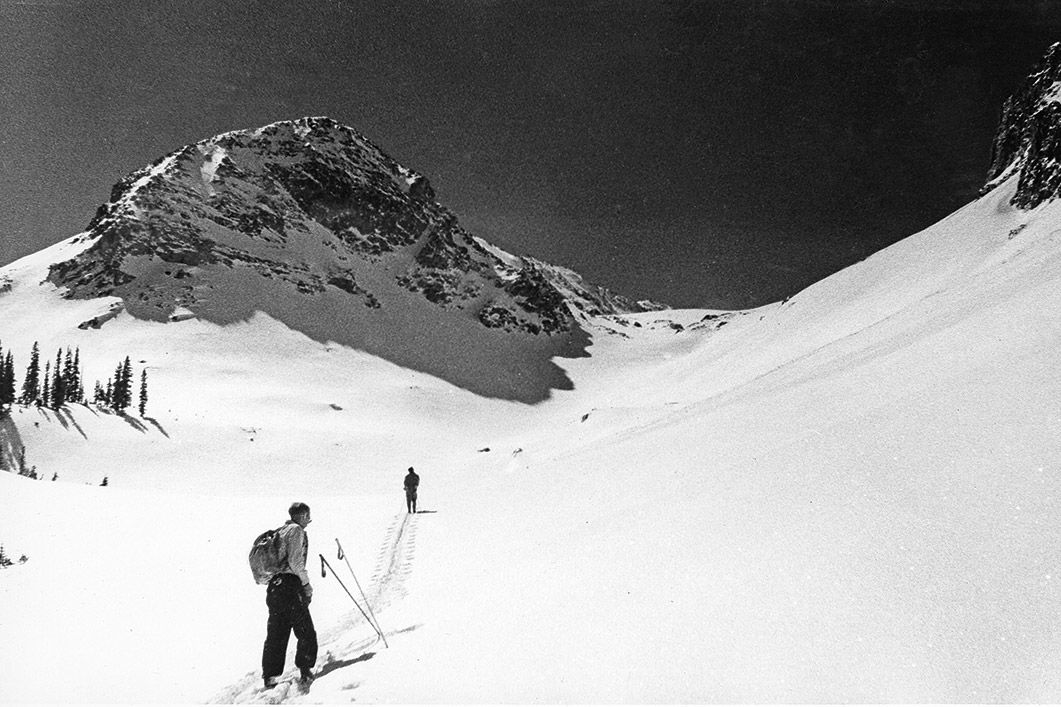
The Complete Guide to Aspen's Storied Ski History

To appreciate Aspen’s ski history, you must imagine yourself in the present of the past, and understand how, in historian Howard Zinn’s words, “the future is an infinite succession of presents.” Try to consider how a pioneering ski world of wet wool, cold damp leather, and slippery hemp rope-tows—days when technology was still called “invention”—brought physical challenges that might seem impossible in today’s abundance of amenities. In what ways are we tougher, weaker?
Skiing was first used for transportation, hunting, warfare, and mail delivery before it became a recreational sport. A 4,000-year-old rock carving above the Arctic Circle depicts a skiing hunter. The Romans encountered “sliding Finns” when trying to conquer northern Europe some 2,000 years ago. Snowshoe Thompson delivered mail in the Sierra Nevadas of California in the 1860s on homemade ten-foot skis. Three skiing Finnish regiments (11,000 men total) famously annihilated two Soviet mechanized divisions (45,000 men) in 1939.
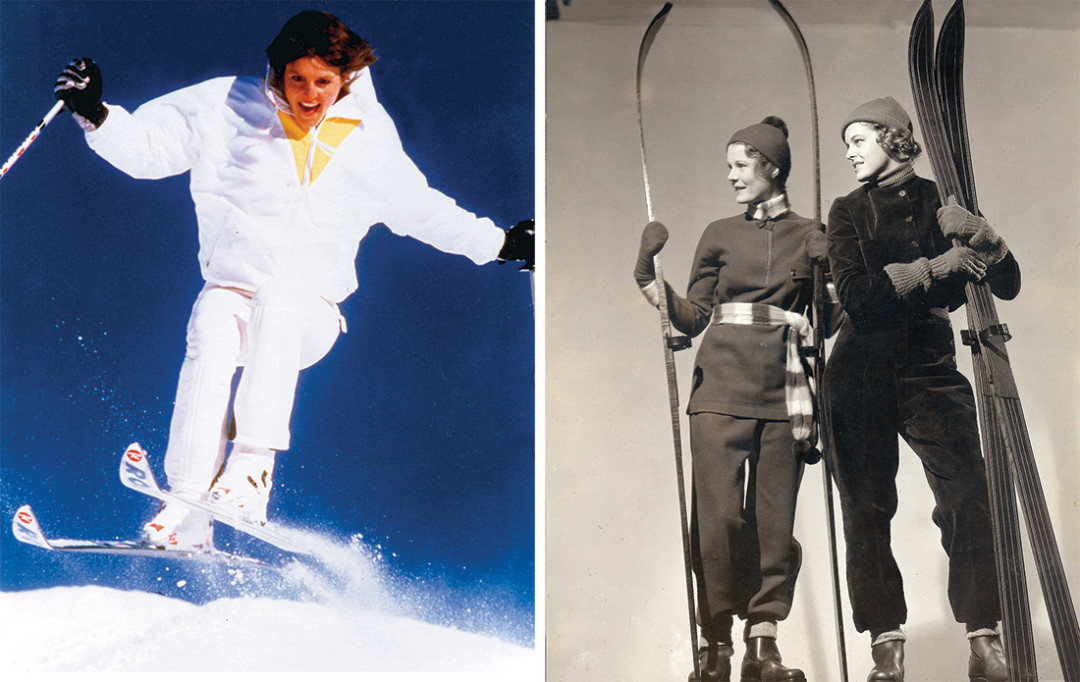
Fairly new on the scene, Aspenites started as skiers flailing on wooden boards torn from the side of their cabins and evolved into hotshot locals, second-home owners, and tourists, all gliding on sophisticated instruments that respond precisely on a variety of snow conditions. Where once we negotiated a wild adventurous sport over existing terrain, we’ve become an evolving assortment of enthusiasts with a modern-for-now assortment of tools at our disposal.
As you read this historical timeline of skiing in Aspen, stay mindful of how the present-day experience carries so much of the past. And congratulate yourself: you represent the dreams of others come true.
FASHION:
Ski skirts to Gore-Tex
Skiwear trends loop endlessly from elegant to embarrassing and back again.
Only for a retro ski party would you wear a patchwork neon one-piece, rear-entry boots, finned Oakley glasses, and the horror of a mullet. Your date might rat her hair bigger than sagebrush, sport a billowing fuchsia jacket with padded shoulders and tight starred pants with Clydesdale cuffs, all while listening to Nu Shooz on her Walkman. What were we thinking in the 1980s?
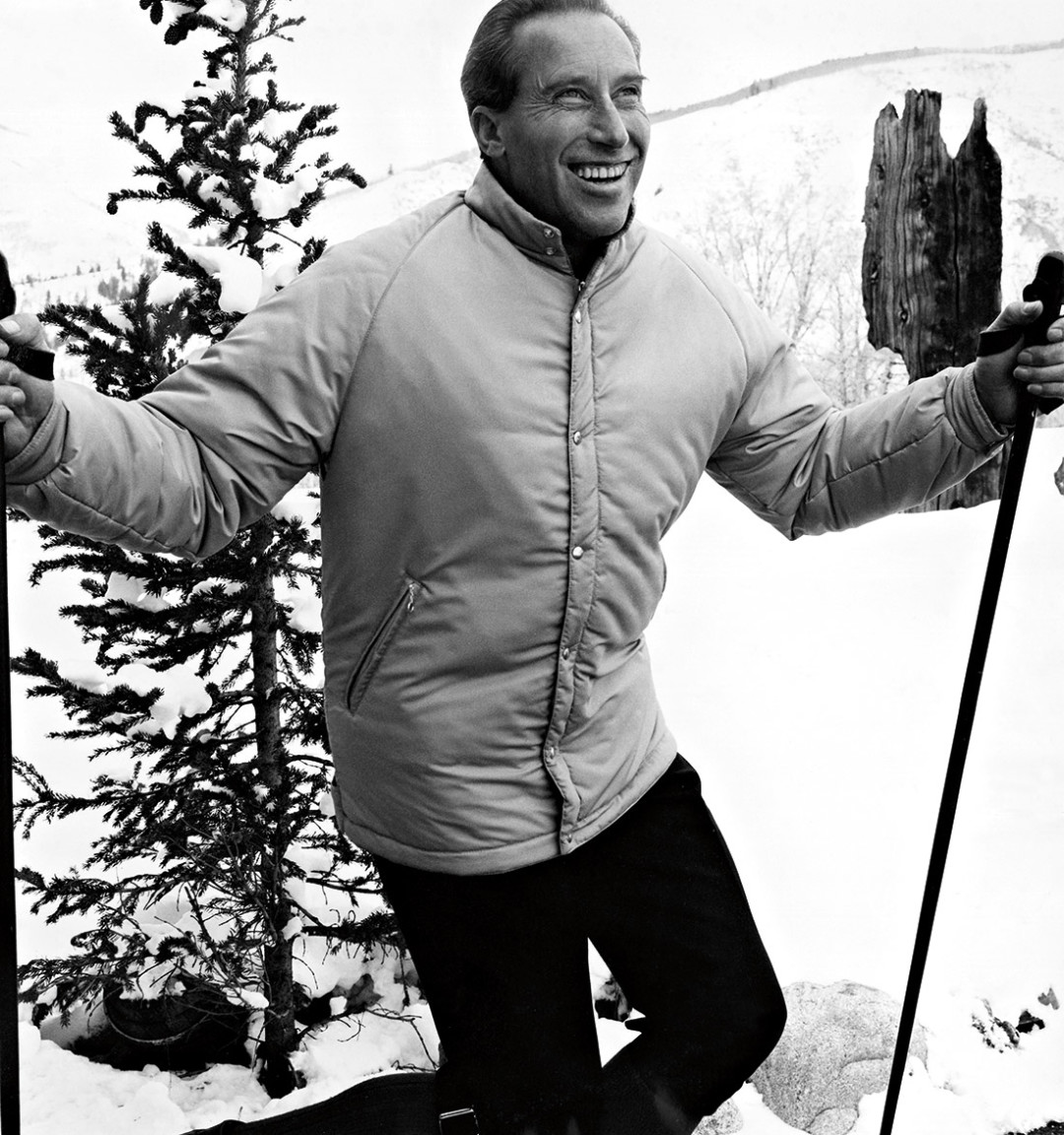
Then as now, fashion and function struggle like two birds tied to the same string. In 1911, Paula von Lamberg, the “flying countess of Kitzbühel,” set the first women’s ski jump record of twenty-two meters, in Austria, wearing a long skirt. Not long thereafter, wool gabardine coats and jodhpurs segued into ski outfits. In the Aspen of 1936, the German Ski Team practiced in tailored double-breasted gray jackets atop matching bloused trousers.
Fashion and function merged in the 1940s with “Byrd cloth.” Developed by Admiral Byrd for his Antarctica expedition, the reversible brown or blue jackets were made of water-resistant poplin. They contrasted with the roomy pantaloons that gave men and wasp-waisted women an inverted triangle look. In 1948, Klaus Obermeyer, founder of Sport Obermeyer, fashioned the first down jacket from quilts for the cold ride up Aspen’s original Lift 1. Finding a manufacturer, he quickly sold out his first seventy-five jackets. The rest is history.
The 1950s saw ski clothing experiment with lighter, warmer fabrics. Locally, ski school co-director Fred Iselin developed a nylon pullover jacket with a kangaroo pocket, while his wife, Elli, brought the Bavarian look to her shop, Elli’s of Aspen. In 1953, Bogner forever rocked the ski world with creased, stirrupped stretch pants.
Of Aspen ski bums in the 1960s, Playboy Magazine quipped, “Lots of suds and the right duds.” Tight stretch pants in bright colors reigned supreme, showing off—for better or for worse—every contour. Peaked Moriarty hats, Bouton rubber goggles, and a belted White Stag nylon parka soon became the standard skier’s uniform, with snow-crusted damask wool socks below corduroy knickers occasionally breaking the monotony. Then fitted sweaters worn over turtlenecks, paired with side-striped stretch pants à la Jean-Claude Killy, ruled the day.
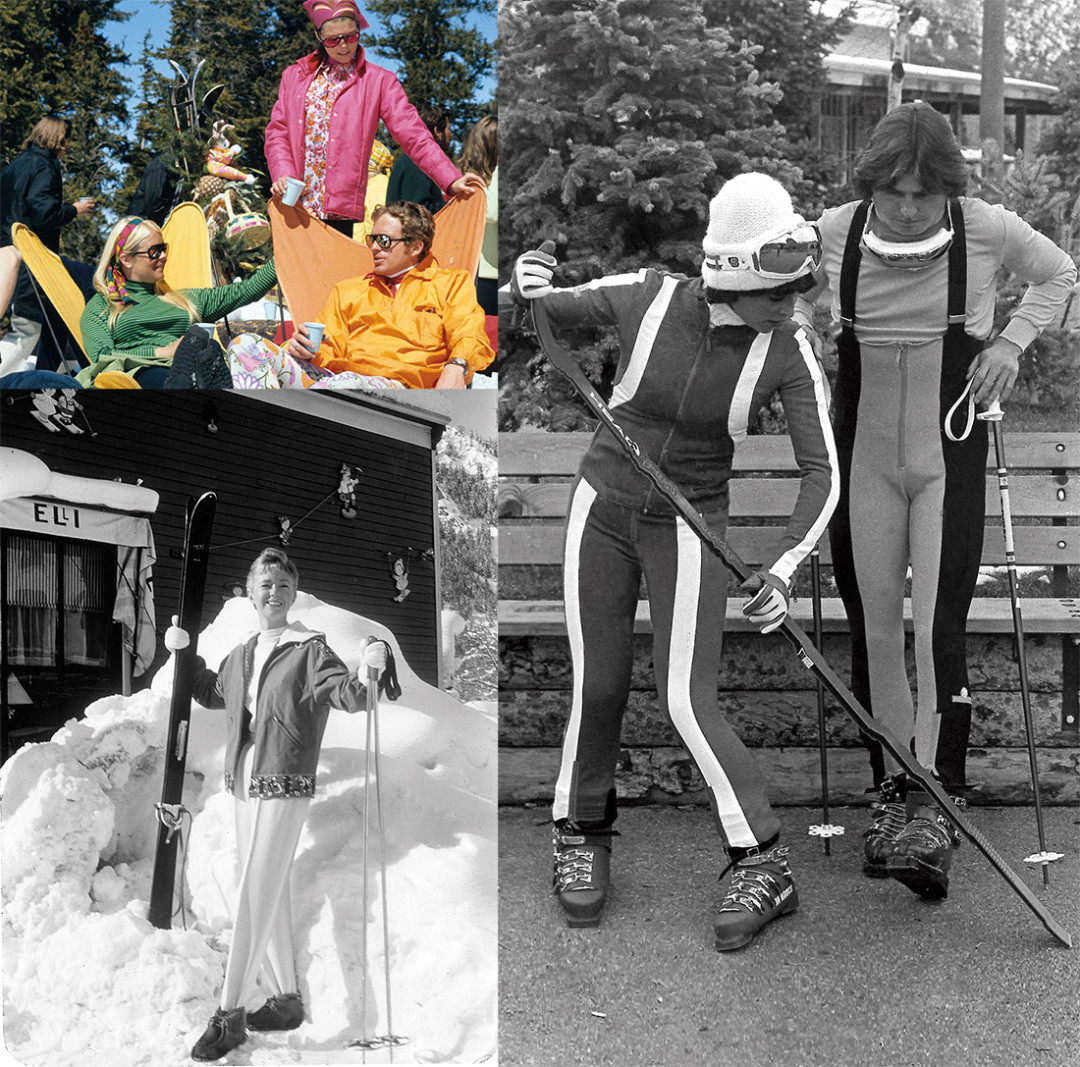
Next came the unbridled ’70s, when ski styles polarized the Aspen slopes. Local lift-line anarchists on mescaline wore duct-taped down jackets, ratty nylon warmup pants with a leather strap cinched below one knee, and boxy double-lens Smith goggles, while at the other end of the spectrum coastal jet-setters flaunted lynx, baby seal, and Mongolian lamb before “politically incorrect” was a concept. Hirsute “freedoggers” in headbands pounded the bumps in Dacron bibbed pants. Jacket sleeves zipped off leaving leather-yoked vests, merging ski fashion with street fashion.
As glitterati blitzed Aspen in the ’80s, colorful race-padded stretch pants gave way to the looser Gore-Tex pant and jacket combinations of the ’90s, layered over wicking polypropylenes. Earth tones overruled neon. With the millennium, metrosexual men in fauxhawks brought the calculated insouciance of permastubble to town, sporting shiny, puffy pastel jackets. “Whatever-bearded” (modified Van Dyke) locals preferred darker combinations with uncountable hidden pockets. International women trended fake fur collars and anything Chanel.
Today there is no longer a single prevailing style of days past. Hyper-aerobic ski mountaineers opt for highly breathable pieces of tech; the fashion-minded make turns in head-to-toe Prada that is almost equally functional. For most skiers, slimming colors are vogue, except for the youthful gangsta style of oversized jackets and baggy pants atop monster-truck skis, which evolved from snowboarding into the wrinkled Shar-Pei-pup look. And yes, for reasons unknown, the one-piece is making a comeback.
EQUIPMENT:
Gear through the years
Thanks to innovations, skiing got easier.
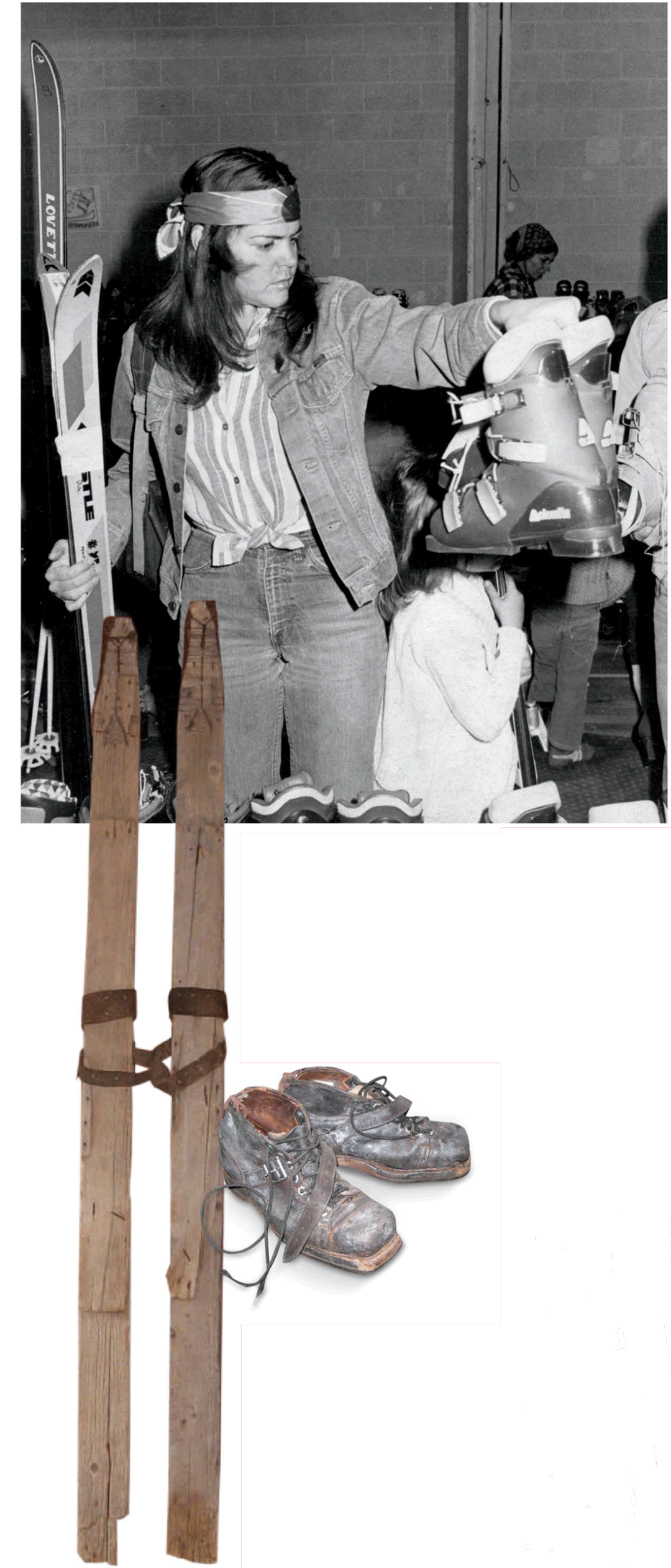
Anyone who has tried to use antique ski gear understands that equipment had a lot to do with how skiing evolved. The brutish techniques seen in old photos are what it took to make long, rigid skis turn. And if the people look uncomfortable, it’s because they were freezing. As equipment and outerwear have improved, often with the help of Aspenites, so have our abilities to make it down the mountain and our odds of avoiding frostbite.
Skis have made regular leaps forward. Metal edges were a huge postwar advancement, rendering ice marginally less terrifying while also creating the possibility to literally carve turns. Moving from wood to full metal construction was the first step in making skis stronger, lighter, livelier, and easier to turn without sacrificing stability. Fiberglass and carbon fiber continued the trend, bringing more torsional-flex options, while still being light enough to allow the sizes and shapes of skis to expand.
Ivan Petkov, a former World Cup racer and surfboard shaper, co-founded S Ski in Aspen in 1993, perfecting the shaped-ski designs that brought carving to the masses. Fat sticks made powder and crud more manageable, while rockering a ski’s camber amplified the advancements, making the turn easier to engage and exit. As a result, more weekend warriors are stomping the big mountain terrain of Highland Bowl like pros.
Some of the first rockered skis, other than actual barrel staves, were developed by Roby Albouy in Aspen in the late 1960s. Also like barrel staves, they weren’t broadly skiable. Now, fifty years later, with the right design and materials, rockers are the rage.
Ski boot makers advanced from leather to plastic in the early 1960s, spearheaded by Bob Lange of Boulder and Aspen. Just about the time a good leather boot got broken in, it wore out. With plastic boots, it became a matter of breaking your feet in to the boots.
Beyond not being torturous, boots need to supply the support and flex to help speed down a mountainside on skis and boards in evolving ways. As one example, the higher-backed, stiffer boots of the late ’60s let skiers get further in the backseat, allowing the French Technique to take hold.
Getting performance without jammed and frozen toes or bruised ankles and shins has long been key to selling these costly creations. Today, orthotics, injected liners, and talented boot-fitters have made even very stiff plastic shells into things you can après in for hours. The Zip-Fit Liner system, developed by Sven Coomer of Aspen (who also designed the sublime HotGear Boot Bag), is a good example. And the valley’s Jack Rafferty and his Thotics, Inc. have long been at the forefront of boot fitting.
Clothing has similarly moved the sport forward by making it more bearable. Klaus Obermeyer got his start by trying to make cold days warmer for his ski school students when he invented the first down parka. Basing his popular softgoods company in Aspen for more than sixty years, Obermeyer, like every other innovative manufacturer, is continually helping make it possible to ride warmer, safer, deeper, bigger, gnarlier than ever before.
TECHNIQUE:
Turns through time
Learning to arc one’s way down the mountain has been a never-ending quest.
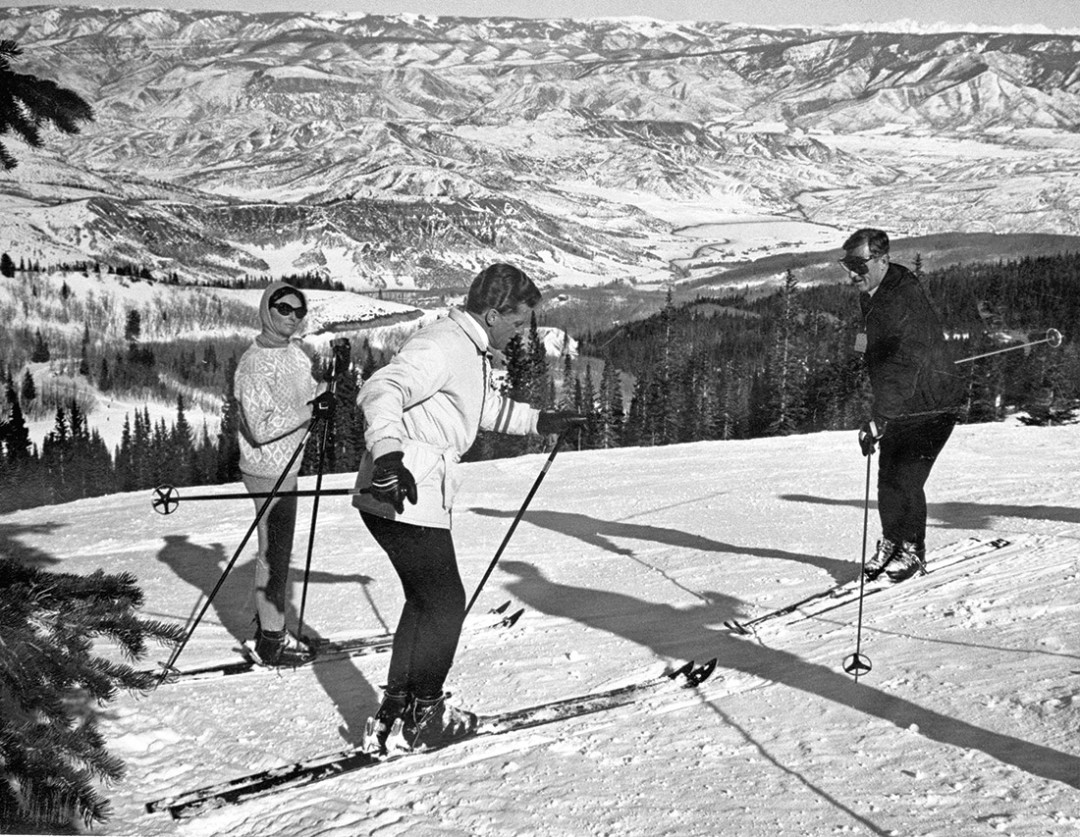
Technique and equipment have always been codependents. As gear has advanced so has the way we use it. And as we have come to new understandings about what we can do, tools have been created to help us go further.
Aspen’s early straightlining miners had a straightforward technique: just try to stay upright. When turning became a necessary skill, technique grew infinitely more complicated. It gave rise to the Nordic-based telemark turn (functional, fluid, and graceful) and the Alpine-based stem christie, a kind of half snowplow that allowed a skier to execute faster turns.
American Dick Durrance, the country’s top racer between the wars and later a longtime Aspenite, learned the Arlberg Technique and the newly introduced parallel turn in Austria at a young age. He was portrayed in famous photos and on a medal awarded to junior racers in a hunkered-down, full press stance, the only position that would accomplish what he needed to do and one that perfectly defined the racing technique of the day.

After WWII, ski styles quickly became more specialized and nationalized. Begun in 1910, the seminal Arlberg approach, which taught a connected progression through the levels of skiing that made it much easier to learn, led the way for years. It flourished around the world and in Aspen with legendary Austrian racers such as Friedl Pfiefer and Anderl Molterer.
Swiss skiing genius and top racer Fred Iselin came to Aspen in 1947 and spent forty years helping define modern ski techniques and, most importantly, demonstrating how to do it and have as much fun as possible. His book Invitation to Skiing is considered the classic of the genre.
When Stein Eriksen was hired to run the ski school at Aspen Highlands, and later Snowmass, he brought with him a small army of Scandinavian instructors and a “reverse shoulder” technique that looked stylie and seemed to work—at least for the Norwegian gold medalist, but not so much for everyone else.
Soon the French Technique stormed the slopes, promoted by their brilliant racers, including Jean-Claude Killy and Jean Paul Jallifier (an eventual Aspenite), who weighted their skis further back than previous racers, creating more speed and leaving their legs more room to absorb terrain changes. Called avalement, this “swallowing” also improved mogul skiing.
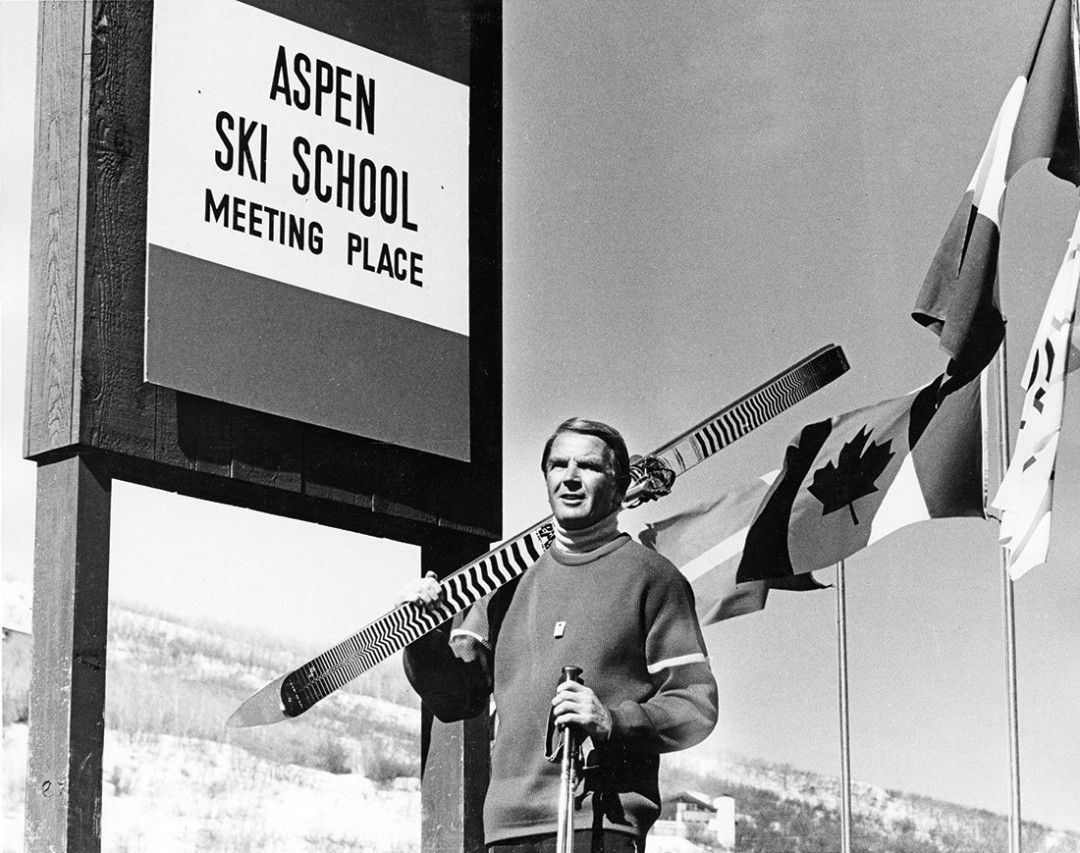
Elements of the French and Arlberg techniques were eventually adapted into the American Teaching Method, which began evolving in the 1960s and is the manual for the Professional Ski Instructors of America and for all the local ski schools. One of its leading developers and gurus was Aspen legend Curt Chase, the head of the combined Aspen ski schools for many years.
In addition to creating the best skiers possible, one of the functions of the ATM was to offer standardized lessons across the country so that students were getting consistent input, learning more easily, and growing the sport. It has doubtlessly succeeded, albeit at some cost to originality.
Meanwhile, technique today has metastasized across so many different platforms it’s hard to even follow. From snowboarding to park and pipe riding, ski racing, skier-cross, big mountain extremes, sit-sleds, super-steep powder, and high alpine ice, the range of sliding options on snow has exploded, and each has some rules of its own. Aspen’s avant-garde in all of these fields has once again included some of the best in the world and are too numerous to properly list, but include the likes of Fritz Stammberger, Chris Davenport, the Marolt families past and present, John Clendenin, Torin Yater Wallace, and scores more, many still out there, still teaching, still learning.
INJURIES:
Battle scars
Skier’s thumb to ACL’s, the sport has always carried risk.
Friedl Pfeifer, aspen’s first ski school director, while still in Vermont before WW II, watched skiers take the rope tow to the top of the mountain, ski straight down without turning, and either hit another skier or reach the bottom. Some might argue that the same thing happens today, minus the rope tow. Be that as it may, Pfeifer saw the need to teach turning technique as the first way to avoid ski injuries.
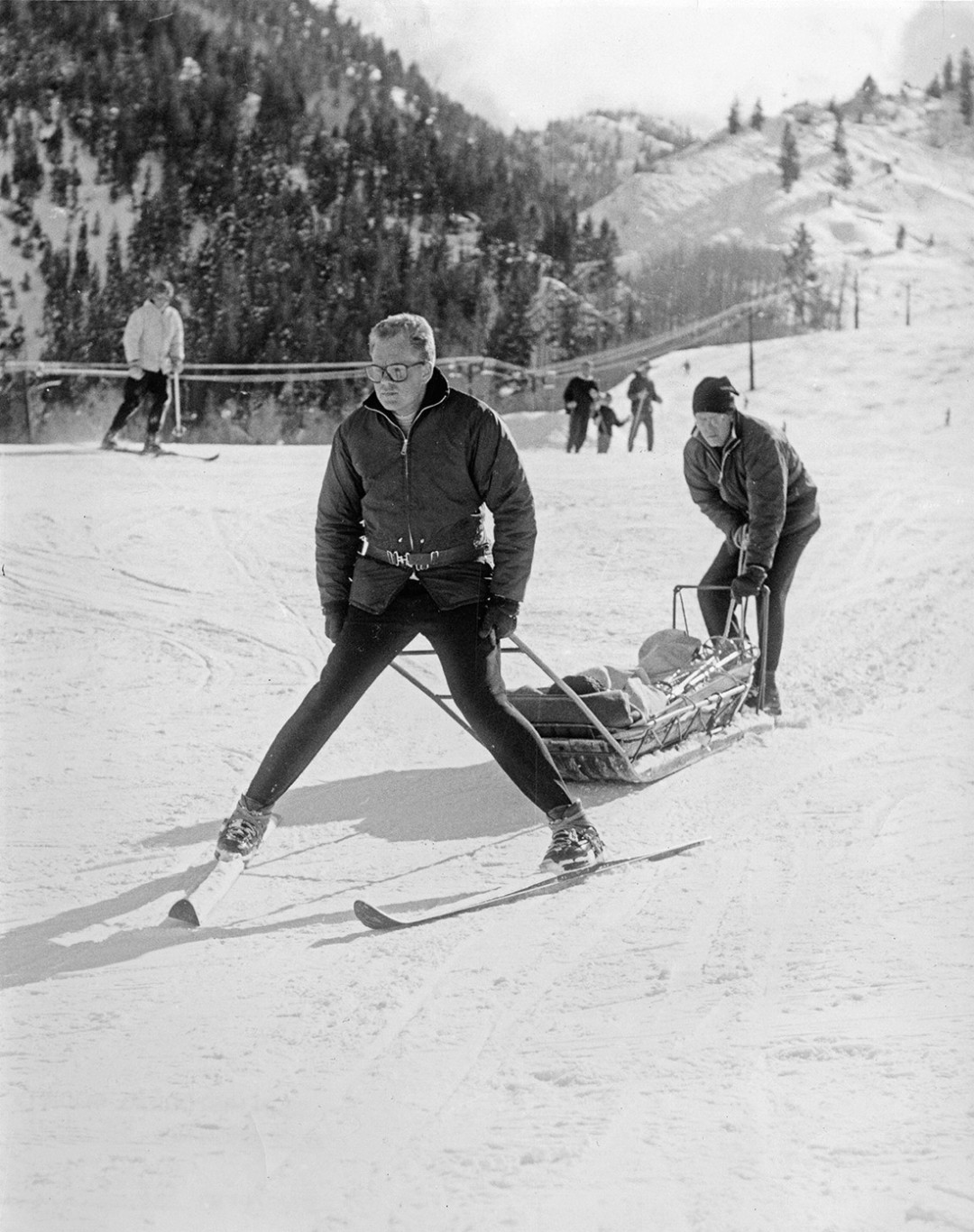
From the 1930s through 1970s, leather and then plastic ankle-high ski boots allowed flexion when a skier fell, making lower leg fractures common. In 1965, German doctors sought to identify possible remedies and fractured some 500 cadaver tibiae as research. They found that twisting spiral fractures due to boot-to-ski friction were the most common break. This lead to the Teflon anti-friction device (AFD) being added to the toe pieces of ski bindings, allowing plastic boots to more easily slide sideways off a similar surface. Spiral fractures decreased more than tenfold. With this constant, the universal Deutsches Institut Normung (DIN) torque release number was calculated for all safety bindings, based on the skier’s age, weight, height, ability, and boot length.
In 1976, safety straps gave way to ski brakes, reducing lacerations from windmilling skis. As stiffer plastic boots climbed to mid-calf in the 1980s and ’90s, anterior cruciate ligament (ACL) tears of the knee became epidemic, and orthoscopic surgery fractionalized healing times. Then snowboarders integrated with ski traffic, increasing collisions with head injuries and random damages, while the ulnar collateral ligament tear—or “skier’s thumb”—and shoulder injuries remained a constant.
More recently, jumbo-fat and all-mountain skis—coupled with helmets, speed, and trail grooming—have led to systemic trauma from skier-versus-skier and skier-versus-tree collisions. Aspen emergency room physician Bud Glismann cites other factors: “ski-porn” films, the emergence of giant half-pipe “trauma parks,” and backcountry avalanches, wherein the teens-to-thirties demographic—which accounts for 70 percent of snow-sport fatalities—lets the quest for thrills override self-preservation.
Nevertheless, technology continues to address injuries, decreasing them 50 percent since 1970, to 2.69 injuries per 1,000 skier visits. POC Helmets, with a “controlled rotation of the shell relative to the lining,” have evolved to absorb the multidirectional impact of twisting forces common to skiing falls. And the Knee Binding, with a heelpiece that releases laterally to protect knees from a backward twisting fall, is increasing its market share one prudent skier at a time.
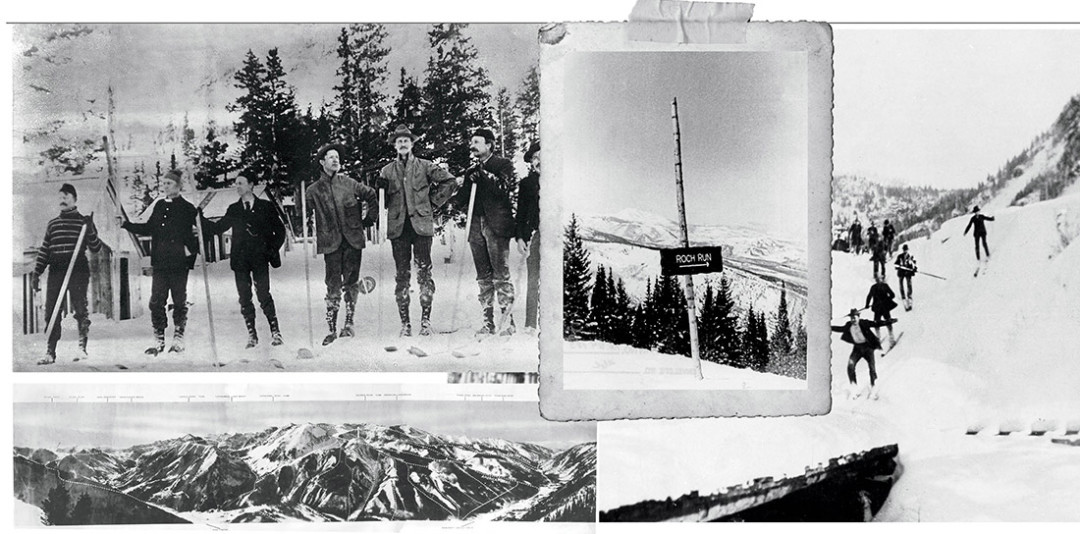
TIMELINE :
1880: In February, through some seven feet of snow, B. Clark Wheeler “skis” into town from Leadville on Norwegian snowshoes to complete the first survey of Ute City. He renames town Aspen.
1880–1890s: Scandinavian silver miners nail leather foot straps to curled ten-foot wooden boards, introducing “Norwegian skees” as a transportation tool. They schuss with a single steel-spiked pole dragged between their legs as a brake. It was said that the boys from the Connemara Mine came down from work in ten minutes.
1899: Starving occupants of the town of Independence escape record snowfalls (up to eighteen feet were reported) and avalanches by fashioning some seventy-five pairs of skis from their cabin walls and skiing into Aspen.
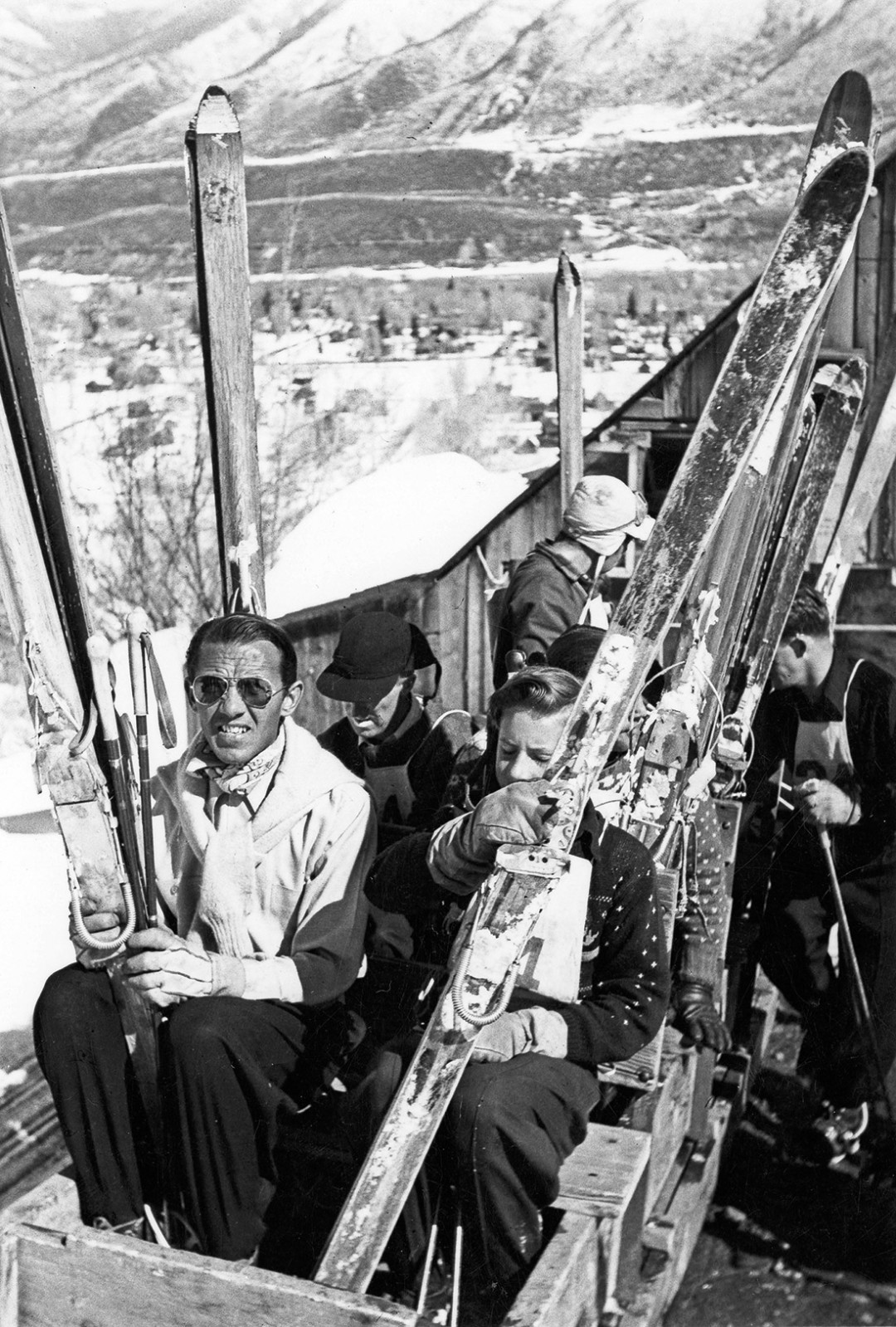
1900s–1930s: Aspen locals rip up hardwood floors of deserted buildings to make skis, curling the tips with steam and fashioning straps from rubber inner tubes. West-end townspeople climbed and skied down Aspen Street from where Lift 1A now stands. East-enders skied lower Smuggler Mountain.
1932: The first U.S. ski manufacturer, Groswold Skis, is opened by Norwegian Thor Groswold in Denver.
1936: Ted Ryan, Billy Fiske, and Tom Flynn hire Swiss mountaineer André Roch and Gunther Langes to survey the Aspen-Ashcroft area for skiing. They explore Mt. Hayden on Groswolds.
1936: Ted Ryan forms the Highlands Bavarian Corporation and builds the first Aspen-area ski lodge at the junction of Castle Creek and Conundrum Valley. $7 per day includes access to hike-to-ski terrain, a room, all meals, and lessons with the Otto Schniebs ski school.
1936: The Roaring Fork Winter Sports Club (RFWSC)—the predecessor of today’s Aspen Valley Ski and Snowboard Club—is formed. Every Sunday, André Roch gives free ski lessons on Maroon Creek Road at the foot of what is today Aspen Highlands and at the base of what is today Buttermilk.
1936: André Roch marks the first ski trail on Aspen Mountain. Frank Willoughby engineers the project, and local volunteers cut the run in the summer of 1937, which extends from the top of what is now Ruthie’s down Corkscrew to the top of Monarch Street.
1936: Aspen locals build the six-passenger Boat Tow from the bottom of today’s Lift 1A to the bottom of what is now Corkscrew and Tower Ten Road. (The top hoist wheel is still cabled to a tree there today.) Components are a secondhand Studebaker motor, two old mine hoists, and two ten-person sleds that went up and down in opposition. The Boat Tow costs $600 to build. Skiers pay $0.10 per ride.
1937: Ted Ryan’s Aspen films screen in Chicago, showing assorted skiers schussing five miles down Mt. Hayden to Ashcroft. The German Ski Team trains at Highlands Bavarian Lodge. RFWSC holds the first-ever Aspen ski race across from the lodge on Richmond Hill.
1937: The Denver & Rio Grande Railroad starts running “snow trains,” bringing skiers and winter enthusiasts to Aspen. Because of poor roads, the railroad would dominate skier travel for the next decade.
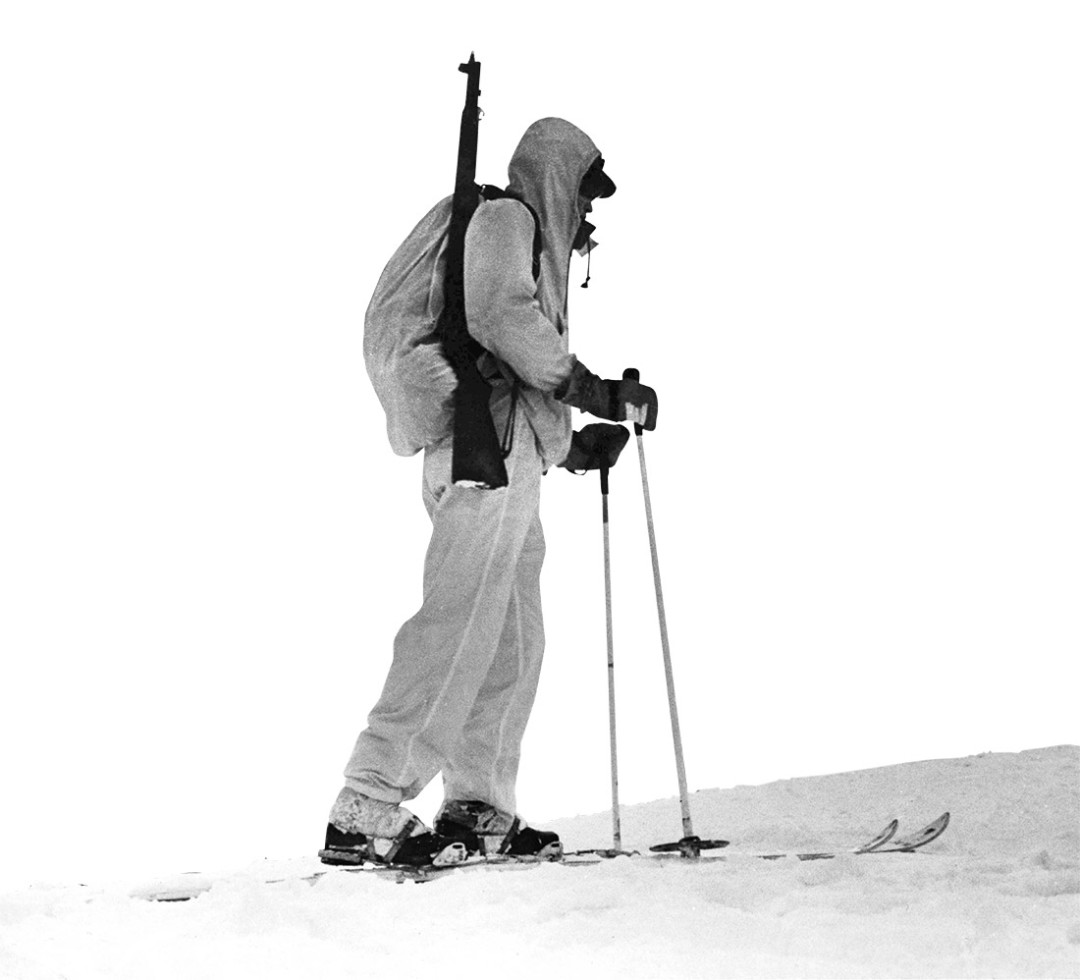
1938: The City of Aspen and the Works Progress Administration build a warming cabin at the top of Roch Run and a fifty-meter ski jump between what is now lower Slalom Hill and Little Nell for “youth development” and regional competitions.
1938–39: Elizabeth Paepcke and a group of friends get a ride up the backside of Aspen Mountain with the Midnight Miners in their trucks. Paepcke skis down the front and grasps the ski area’s potential.
1940: D.R.C. Brown becomes president of the Aspen Ski Club. Billy Fiske dies as a member of the Royal Canadian Air Force.
1941: The U.S. National Downhill and Slalom Championship is held on Roch Run, giving Aspen its first international exposure. Ted Ryan’s Aspen ski movies continue to show around the U.S., and word of Aspen’s beauty and potential spreads throughout the ski world.
1941: Plans are drawn for a tramway up Mt. Hayden from Ashcroft. Architect Ellery Husted envisions a “Williamsburg of the Old West” as base village. Fifteen runs are plotted from the top of Hayden into Castle Creek. Colorado legislature OKs $650,000 in bonds to build 4,000-foot tellaferry up Mt. Hayden. Pearl Harbor puts everything on hold.
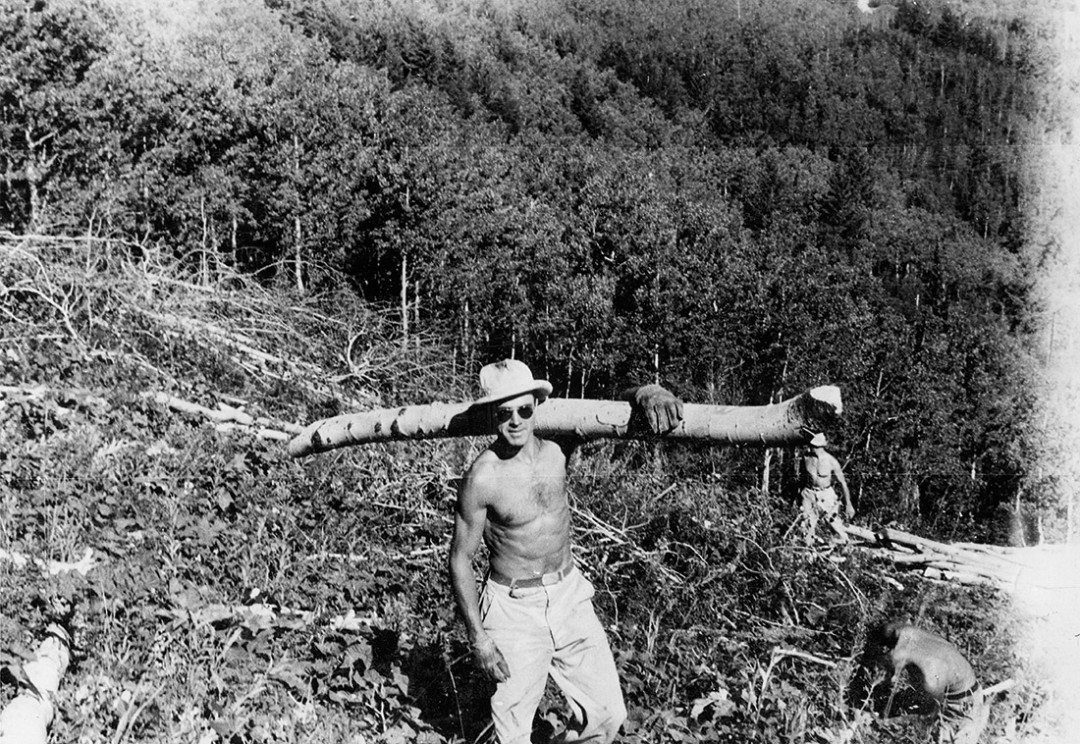
1941: Ted Ryan offers his Ashcroft property for $1 per year to U.S. Army ski troops for training for the duration of the war.
1942: The Southern Rocky Mountain Ski Association holds ski-jumping and cross-country events in Aspen. World-record-holder Alf Engen, from Norway, gives a ski-jumping exhibition. Events include skijoring on Main Street and rope racing (two skiers tied together on a thirty-foot rope) on Roch Run. A ski ball follows that evening.
1942: The 87th Mountain Battalion trains in Ashcroft but eventually moves to Camp Hale in Leadville as part of the new 10th Mountain Division.
1943: 10th Mountain Division troops cross the Williams Mountains from Camp Hale on Groswold Skis, march into Aspen, and are met by the town band. Some stay at the Hotel Jerome and are given a steak and a room for $1. Sgt. Friedl Pfeifer is among them and takes note of Aspen’s ski potential.
1945: As 10th Mountain soldiers and Aspenites-to-be fighting in Italy, Bert Bidwell saves Friedl Pfeifer’s life in battle. (Bidwell would tell a surprised Pfeifer a month before Pfeifer’s death in 1995 that it was he who had saved him in Italy.) Pfeifer returns after the war, minus part of a lung, forms the Aspen Ski School with Percy Rideout and Johnny Litchfield, and takes over the Boat Tow. He promotes Aspen Mountain over the Mt. Hayden proposal.
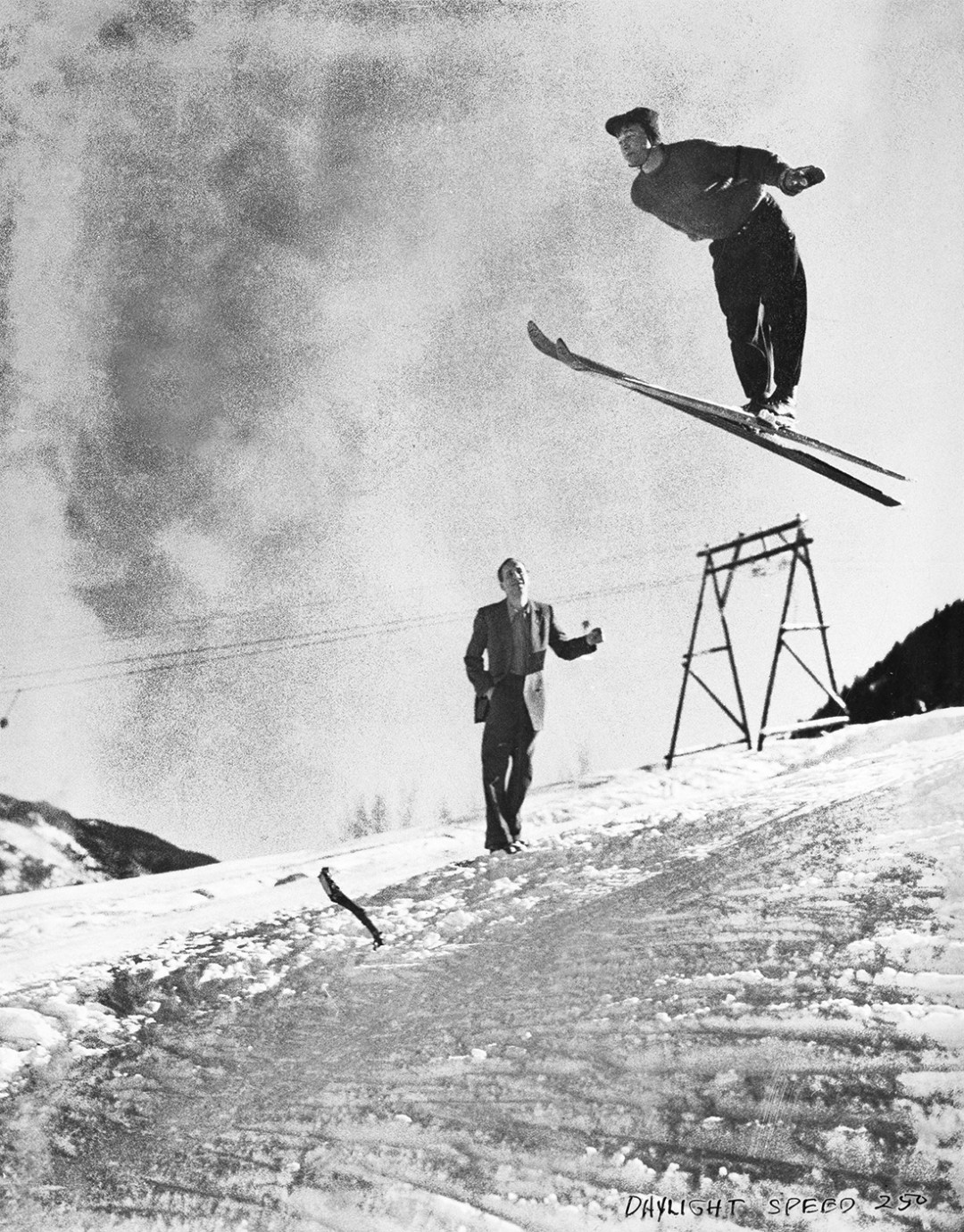
1945–46: Walter Paepcke conceives of Aspen as a cultural center and plans the first ski lift with Friedl Pfeifer. With the Hayden-tram plans tabled, Aspen Mountain’s reputation presents the best opportunity to evolve the hike-and-ski experience to chairlift-ride-and-ski.
1946: The Aspen Ski Corporation is founded by Friedl Pfeifer, Johnny Litchfield, Percy Rideout, and Walter Paepcke. D.R.C. Brown leases his mining claims on Aspen Mountain to the new company.
1946: Summer brings the construction of Aspen’s first chairlifts: the single-chair Lift 1 to today’s Midway—“the longest chairlift in the world”—and Lift 2, which runs from the top of Lift 1 to the new octagon Sundeck at the mountaintop, where beer, pop, ham sandwiches, and coffee are served. Aspen Mountain opens on Dec. 14. A season pass costs $140. A day pass is $3.75.
1946: The first annual Roch Cup ski race is held. The ski train to Aspen from Denver, with dining and sleeper cars, runs regularly. Mike Magnifico’s cobbler shop becomes Magnifico Sports Shop, the first to sell ski equipment in Aspen, including handmade Magnifico ski boots.
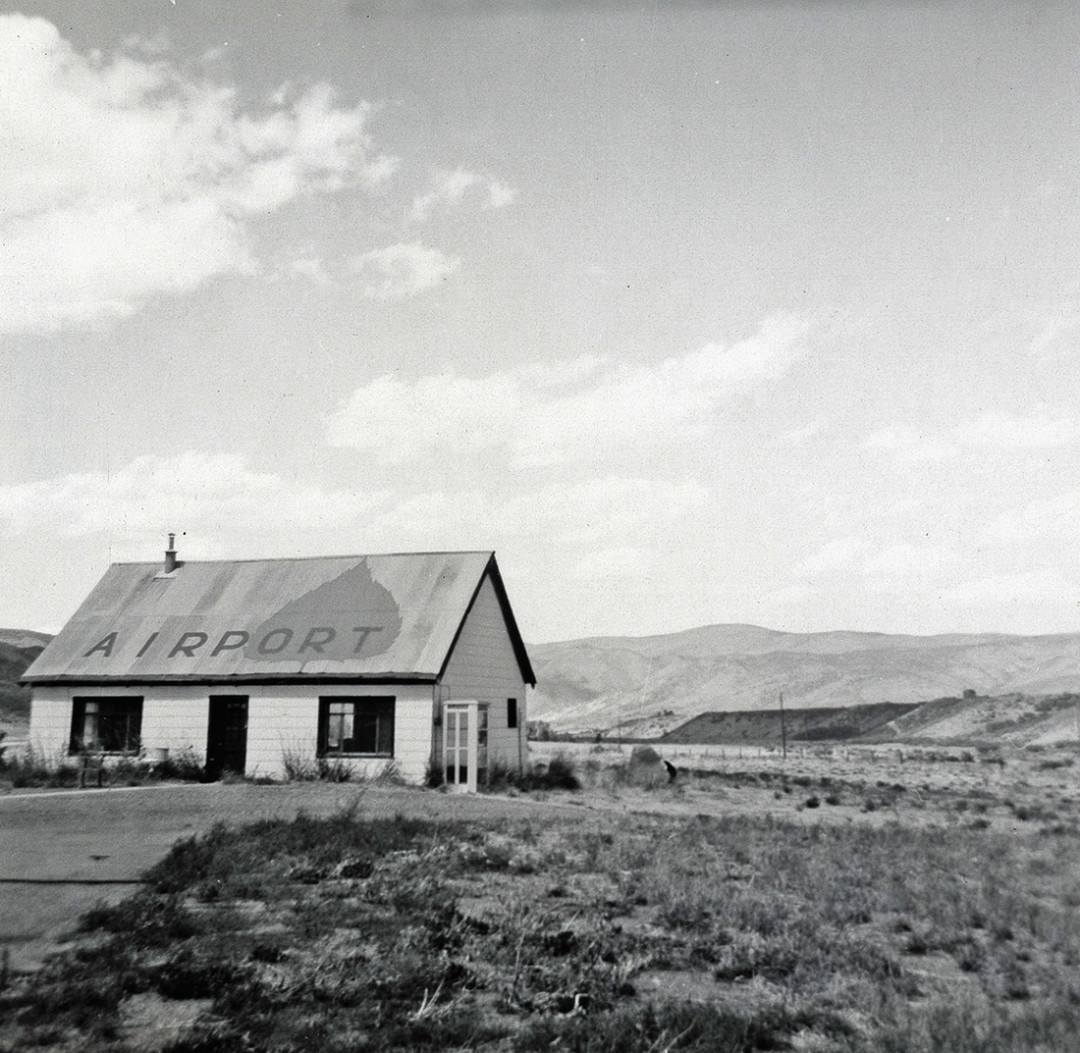
1946: Walter Paepcke opens the county airport, which consists of a cabin and a gravel runway.
1947: Dick Durrance films Winter in Aspen and cuts Ruthie’s Run without needing Forest Service approval.
1947–48: The Little Nell run is cleared and widened as a beginners’ hill. The Constam T-bar is built. Night skiing debuts; tickets, $1. Ski Patrol is formed. Six phones installed. Lift 1 and Lift 2’s combined uphill capacity is 1,070 skiers an hour. The Friedl Pfeifer Ski School, with Fred Iselin as co-director, joins the Aspen Ski Corp.
1949: Unable to compete with automobiles, the Denver & Rio Grande Railroad runs its last passenger trains to Aspen; it continues with freight until 1969.
1950: 1,500 people book rooms in town as Aspen hosts the first U.S. FIS. World Championships. Zeno Coló wins the combined with witches’ brew wax concocted by fellow Italian Mike Magnifico. Stein Eriksen sails 150 feet in the air off of the Willoughby jump.
1951: The Spar Gulch run is widened. A daily lift ticket costs $4.05. Wintersköl—an event-filled celebration for locals during the slow part of the ski season—is started by Jack dePagter. 175,000 ski tickets are sold statewide for Colorado’s four ski areas.
1952: Walter Paepcke starts Aspen Airways with surplus DC-3s; planes become the most efficient travel from Denver for skiers. Larger planes and multiple airlines begin an evolution of operations to service Aspen.
1953–54: Annual snowfall: 59.10 inches. Total Colorado skier visits: 192,500.
1954: Lift 3 from lower Tourtelotte to the Sundeck is built for $120,000. Highway 82 is paved.
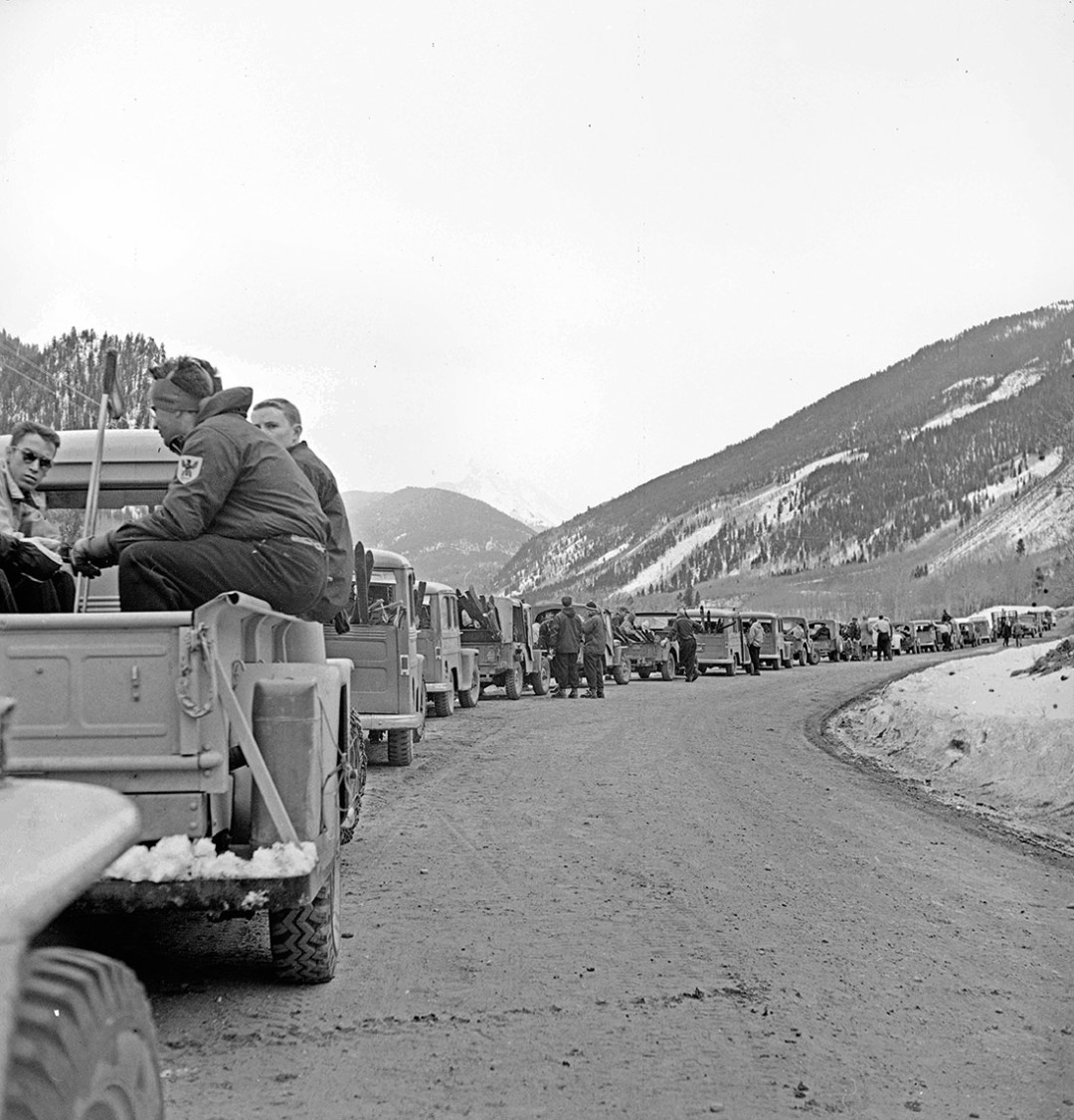
1954: Operation Jeep Lift: Lift 1 breaks, so the Ski Corp. plows Midnight Mine road. For one week, townspeople drive skiers up to top of Aspen Mountain in their Jeeps. They receive $1,109 in tips. Thirty-five Jeeps hauled 2,500 skiers.
1955: Aspen logs 62,000 skier visits. Pfeifer’s ski school is the biggest in the country.
1956: Lift 4 installed from the bottom of Little Nell to Bell Mountain, replacing the T-bar. The Sundeck is enlarged. Fred Iselin survives an avalanche burial on Aspen Mountain’s Back of Bell.
1957: Lift 5 is built from the bottom of Bell Mountain to the top, carrying 700 skiers per hour and nearly doubling uphill capacity to the top of Aspen Mountain. Pitkin County commissioner Tom Sardy spearheads paving a single runway at the Aspen airport (Pitkin County Airport) for larger planes. Airport is renamed Sardy Field.
1958: Friedl Pfeifer and Art Pfister open Buttermilk with a single T-bar. Whip Jones opens Aspen Highlands with two chair lifts, a T-bar, and a rope tow; Stein Eriksen heads the ski school. Skier visits jump to 139,400 for the season across the three mountains.
1959: D.R.C. Brown becomes president of the Aspen Ski Corp. Lift 6 is built on Aspen Mountain. Cliff Taylor introduces the Graduated Length Method of ski instruction at Aspen Highlands.
1960: First trail grooming: Oliver Caterpillar tractors with blades smooth moguls, followed by a crew that packs the snow with their skis. Friedl Pfeifer holds the first pro ski race at Buttermilk. Toni Spiess, Anderl Molterer, Stein Eriksen, and Pepi Gramshammer compete.
1960–68: “Surfer bums” discover Aspen and become the first ski bums. In 1965, the Denver Post dubs them “ski-niks.” The advent of stretch pants makes skiing more fashionable.
1962: Four new ski jumps—7, 12, 25, and 40 meters—with a viewing stand are built at the bottom of today’s Slalom Hill on Aspen Mountain to replace the original 50-meter jump. The jumps are sponsored by the Aspen Lions Club to “help boys make the jump to manhood.” Two new chairlifts are installed at Buttermilk.
1961–62: The Cloud Nine lift and restaurant are built at Aspen Highlands. Olympic Bowl opens. A rival ski area—Vail—opens.
1963: The Aspen Ski Corp. buys Buttermilk. Ruthie’s double chair (1,000 people per hour) is built on Aspen Mountain. All downtown Aspen streets are paved. Fred Iselin becomes head of ski school.

1964–65: Exhibition and Loge Peak lifts open at Aspen Highlands. Buttermilk West opens. Aspen Highlands logs 68,000 skier visits; Buttermilk, 87,500; Aspen Mountain, 174,000. Annual snowfall is 219 inches.
1966: Gretl’s (now Bonnie’s) restaurant is built on Aspen Mountain. Aspen Airways offers four flights per day from Denver; a standby ticket costs $25.
1967: Independence Pass is paved.
1967: Mt. Baldy opens as Snowmass-at-Aspen ski area, an Alpine village with five chairlifts. “A planned development with heavyweight corporate proficiency,” says Skiing Magazine. Day ski ticket: $6.50. Rudimentary snowmaking tried on Little Nell ski run, Aspen Mountain.
1968: Aspen Mountain hosts its first World Cup race, the Roch World Cup, (“World Cup” first becomes an official FIS event in ’67.) American Billy Kidd wins the slalom.
1969: The Thunderbowl lift is built at Aspen Highlands.
1970: Bob Beattie’s World Pro Ski Tour racing begins. Hippies start to polarize town. Mix of outsider residents, old-timers, and visitors give Aspen a distinct character. The Aspen area’s four ski areas have total of thirty lifts, with a combined uphill capacity of 26,885 skiers per hour.
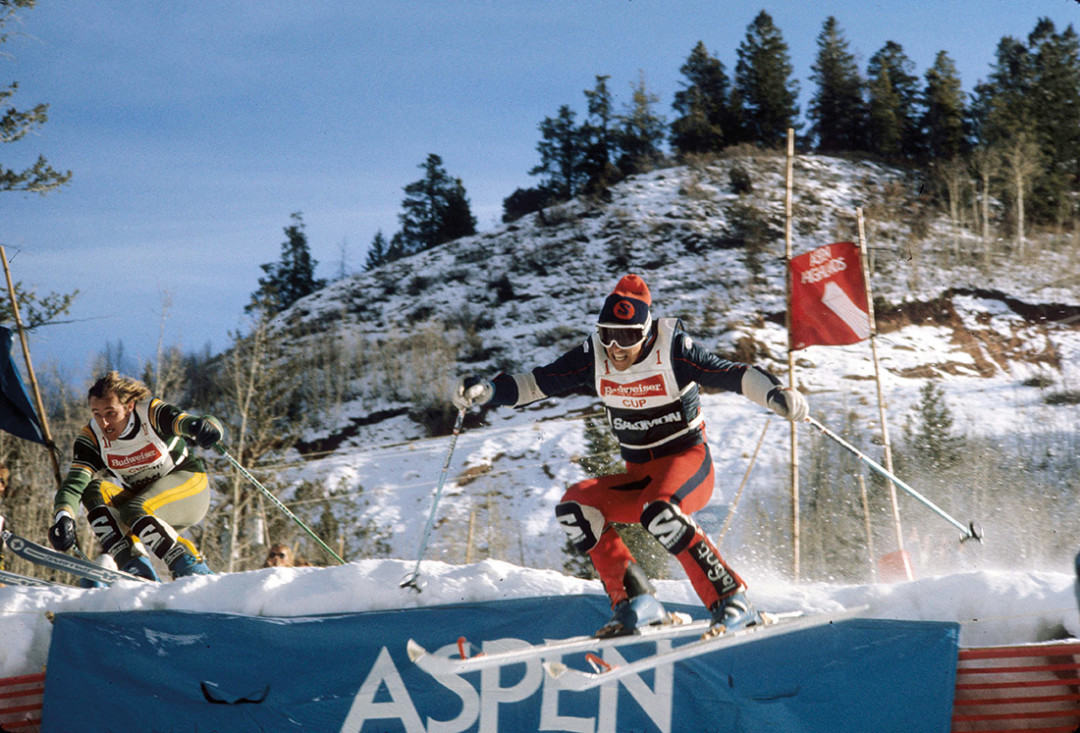
1971–72: The double-chair Lift 1A replaces the original Lift 1, ending at the bottom of Ruthie’s lift instead of Midway. The Aztec trail is cut for World Cup. Ted Ryan opens Ashcroft Ski Touring and the first Pine Creek Cookhouse. A short-lived ski patrol/teamsters strike on Aspen Ski Corp. mountains sees patrollers replaced by scabs.
1973: Aspen Highlands Ski Patrol begins the Cloud Nine Restaurant deck jump. Doug Driskell is the first to jump sixty feet—while pulling a toboggan—over the restaurant crowd.
1974: Aspen’s season pass price doubles “to keep local yahoos from skiing too much,” because tourists are intimidated. Ted Ryan ends the Mt. Hayden ski-area dream and gives the Ashcroft property to the Forest Service for preservation. Aspen ski areas break one million skier visits.
1975–76: Ski bum culture peaks, causing the Aspen Ski Corp. to suspend the three-mountain ski pass’s validity on Aspen Mountain, because rowdy locals are driving away ticket-buying tourists. Full passes are only good for Buttermilk and Snowmass. Locals flock to the Aspen Highlands pass instead.
1976–77: The renowned drought year—annual snowfall is 85.70 inches. Aspen Mountain opens January 10, and the first cloud-seeding program is attempted to produce snow. Austrian Franz Klammer follows his legendary “edge-of-disaster” Olympic-gold downhill run at Innsbruck with a win at America’s Downhill on Aspen Mountain.
1977: Snowmaking is installed on lower Buttermilk; cost: $800,000.
1978: Twentieth Century Fox buys the Aspen Ski Corp. Marvin Davis buys Twentieth Century Fox, and the Aspen Ski Corp. becomes a private company amid much corporate shuffling. The Crown family buys a 50-percent stake.
1978: The Aspen Ski Corp. becomes the Aspen Skiing Company.
1979: First Gay Ski Week is held.

1980: Limited reinstatement of full three-mountain ski pass with partial validity for Aspen Mountain: a season’s pass is sold for $300, good on Snowmass and Buttermilk, with an Aspen Mountain validation sticker an extra $10 per day. The Aspen Highlands pass is still the locals’ protest option. Gretl’s restaurant on Aspen Mountain becomes Bonnie’s.
1981: The first Winternational America’s Downhill is held on Aspen Mountain. Ski Magazine writes about Aspen snowmaking: “Most guns in the west.” Snowmaking exists on 155 acres of Aspen Mountain, 60 acres on Snowmass, and 74 on Buttermilk.
1983–84: A massive avalanche in Highland Bowl kills ski patrolmen Chris Kessler, Tom Snyder, and Craig Soddy while they are doing control work. Aspen Mountain records highest-on-record annual snowfall of 278 inches. Aspen Highlands becomes the first of Aspen’s four ski areas to allow snowboarding.
1984: U.S. Ski Teamer Bill Johnson follows his Sarajevo Olympic downhill win with another at the America’s Downhill on Aspen Mountain.
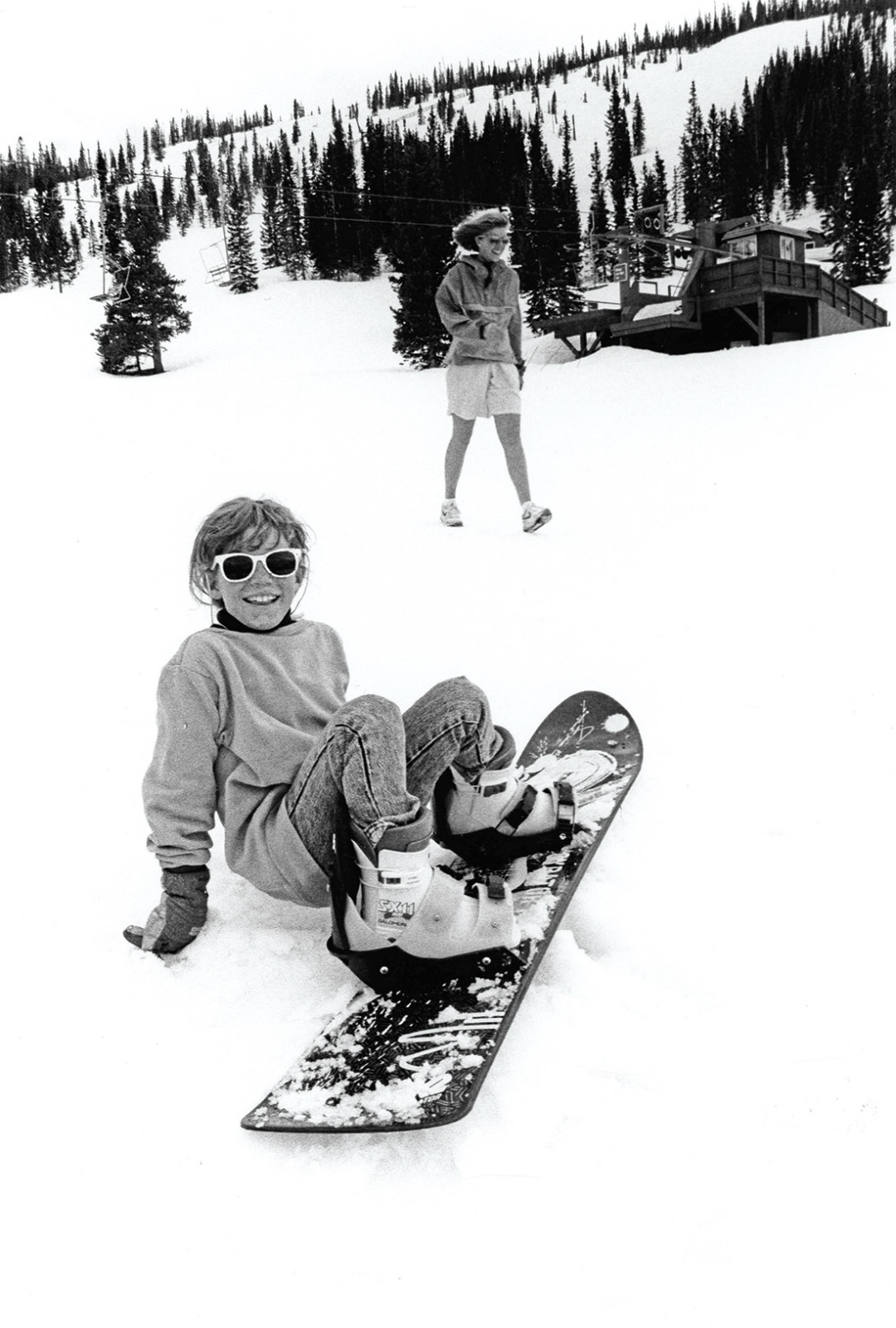
1985: Snowboarding is allowed on a trial basis at Buttermilk. A dorm-room bed still costs $15 per night at the Aspen Highlands Inn. New high-speed-quad Lift 3 is built on Aspen Mountain.
1986: The Silver Queen Gondola opens; a ride to the top of Aspen Mountain now takes fourteen minutes versus thirty on the preexisting chairs. Aspen Professional Ski Patrol Association (APSPA), a labor union, forms amid labor contentions with Aspen Skiing Company president Jerry Blann.
1987: A four-mountain ski pass costs $595 with an Aspen Mountain daily surcharge. Total Colorado skier visits: 9,453,359.
1988: Snowmass allows snowboarding. The inaugural 24 Hours of Aspen ski race on Aspen Mountain sees sleep-deprived teams of two ski racers average 65 to 70 laps in 24 hours for charities, with only gondola rides to rest. Aspen Mountain holds its first women’s World Cup Ski race.
1988–89: The landmark Little Nell après-ski deck and bar are torn down, replaced by the Little Nell Hotel.
1991–92: The full three-mountain season pass (Aspen, Buttermilk, and Snowmass) is reinstated at $1,600, without an Aspen Mountain surcharge.
1993–94: American A.J. Kitt is robbed of his World Cup downhill victory on Aspen Mountain, as warm temperatures, clouds, and ruts incite a Swiss protest and the race’s cancellation. The Crown family acquires full 100 percent of the Aspen Skiing Company and purchases Aspen Highlands.
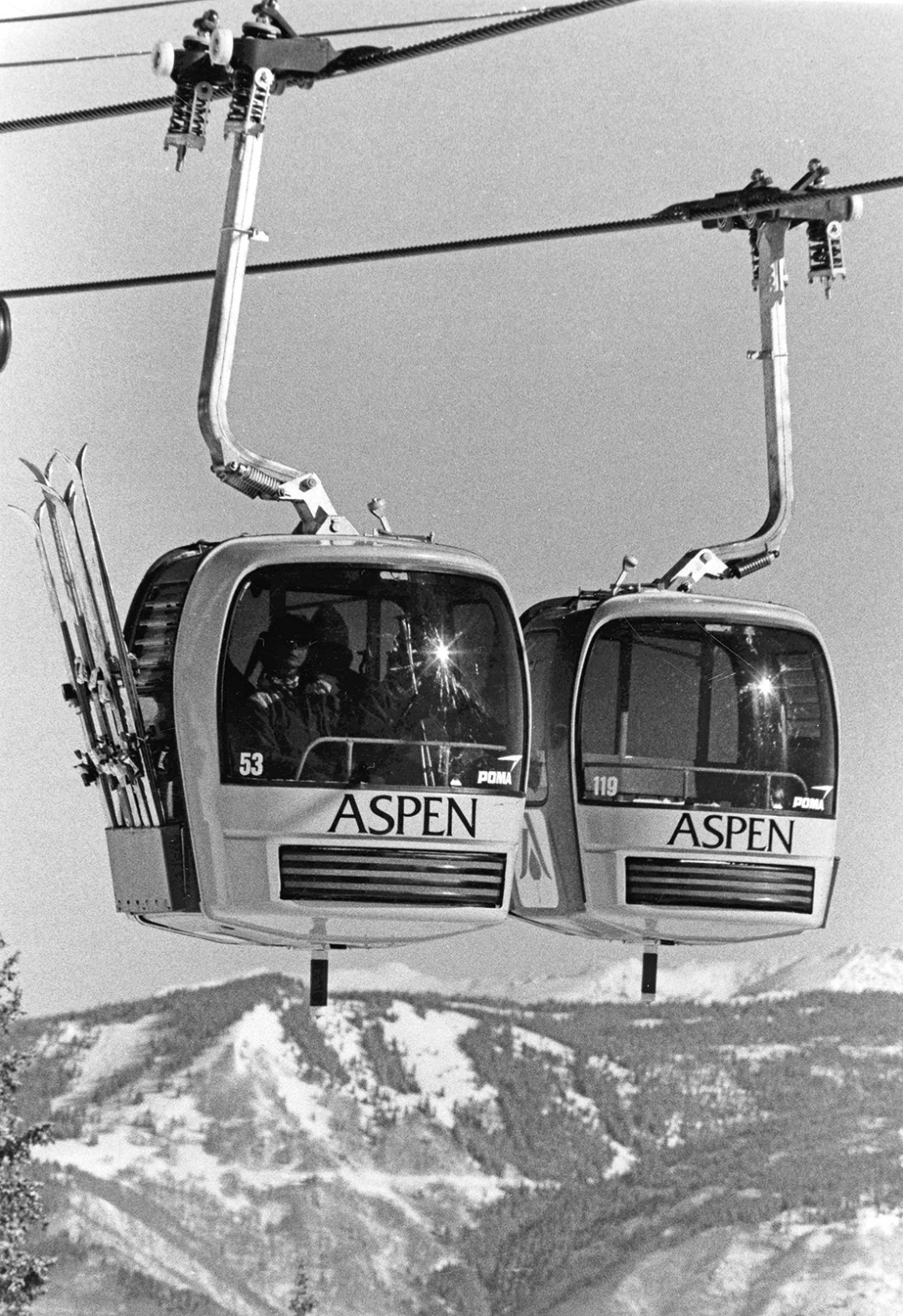
1994–95: A near-record annual snowfall of 239.36 inches; avalanches close Castle Creek Road. A uniquely wild piece of Aspen history dies when Aspen Highlands suspends the restaurant deck jump. A four-mountain day ski ticket costs $52. A.J. Kitt again robbed of Aspen Mountain World Cup downhill victory by FIS decision because 37 racers hadn’t yet run due to heavy snows.
1997: Stein Eriksen is knighted by the King of Norway. The Cirque Headwall platter lift opens at Snowmass, powered by wind-power credits. A new Ruthie’s triple chair replaces the double on Aspen Mountain.
1999: A new Sundeck is built on Aspen Mountain and includes the new, private Aspen Mountain Club.
2000: The Aspen Skiing Company tries to change name of Aspen Mountain to Ajax to avoid marketing confusion over having a snowboard ban on only one of four mountains. Locals prefer historical Aspen Mountain instead of Ajax.
2001: SkiCo president Pat O’Donnell reverses course and allows snowboarding on Aspen Mountain, beginning April 1.
2002: Highland Bowl opens to its summit for hiking up and skiing down. The annual 24 Hours of Aspen ski race is permanently cancelled. Buttermilk hosts the X Games for the first time.
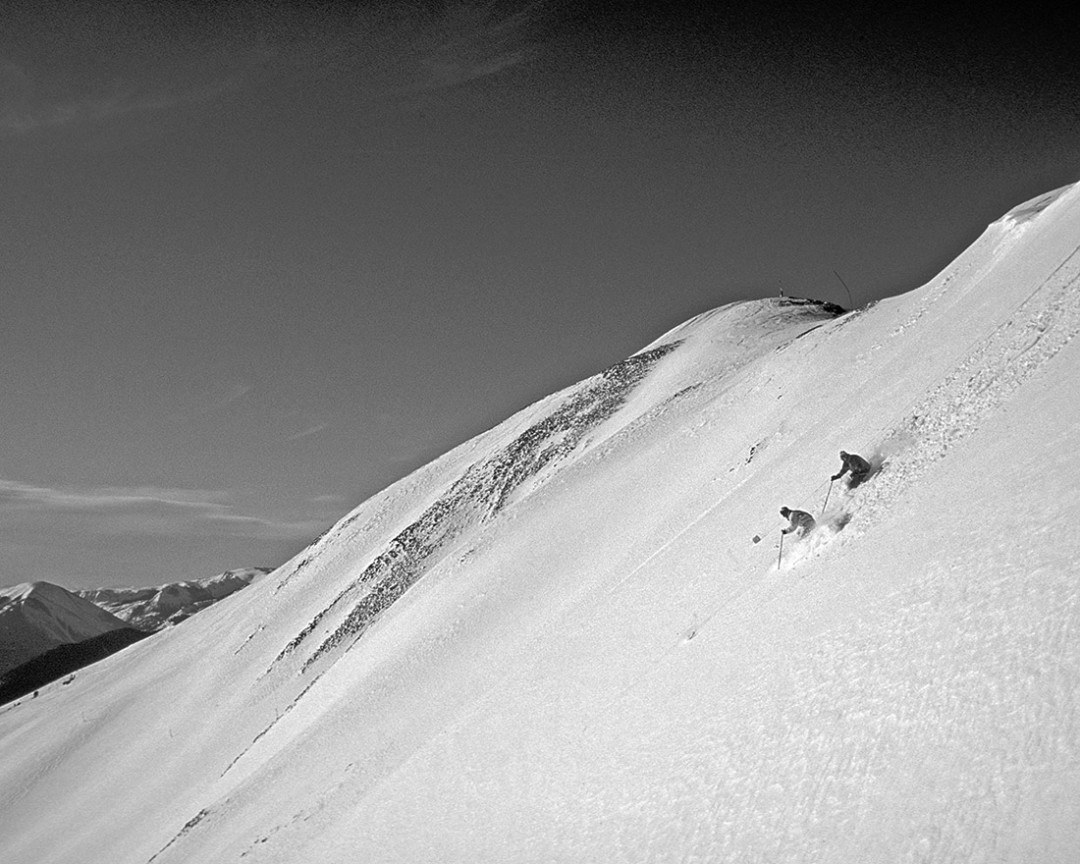
2005: Nick DeVore wins the first Colorado Freeride competition on Burnside Cliffs, Snowmass, jumping three cliffs on telemark skis. First Aspen-area high-speed “six pack” chairlift installed at Snowmass; capacity: 3,000 skiers per hour. The first Summit for Life uphill race is held on Aspen Mountain to benefit the Chris Klug Foundation.
2011: The Power of Four ski mountaineering race debuts, a grueling event with 12,000 feet of vertical gain over twenty-five miles. The single-day ski ticket breaks the $100 barrier ($104).
2012: Snowmass adds 230 acres of hike-to terrain on Burnt Mountain.
2013–14: Aspen’s four mountains now have a total of forty-two ski lifts with a combined capacity of 55,213 skiers per hour. An estimated 1.4 million skiers visit Aspen’s four mountains. Annual snowfall is 226 inches.
2014–15: A strong snow start is stalled by the second lowest January total ever: 5.26 inches. Buttermilk hosts the biggest X Games of all time. Snoop Dogg performs.
2017: FIS men’s and women’s Alpine World Cup Final comes to Aspen Mountain. First time since 1950 FIS World Championships.














































